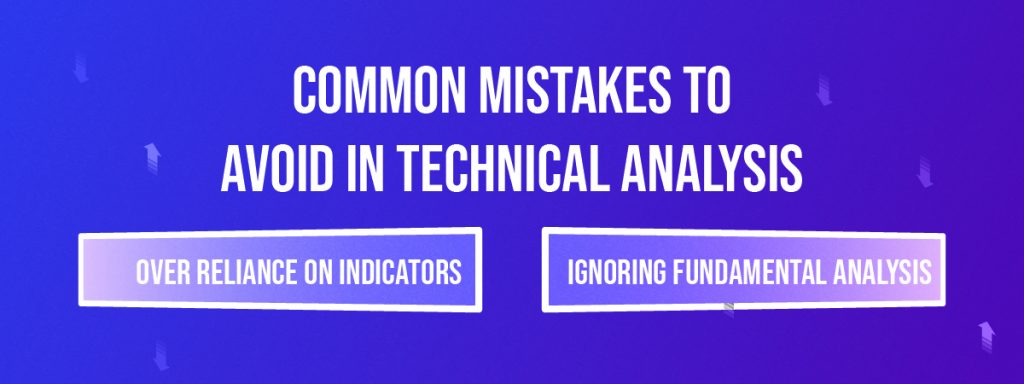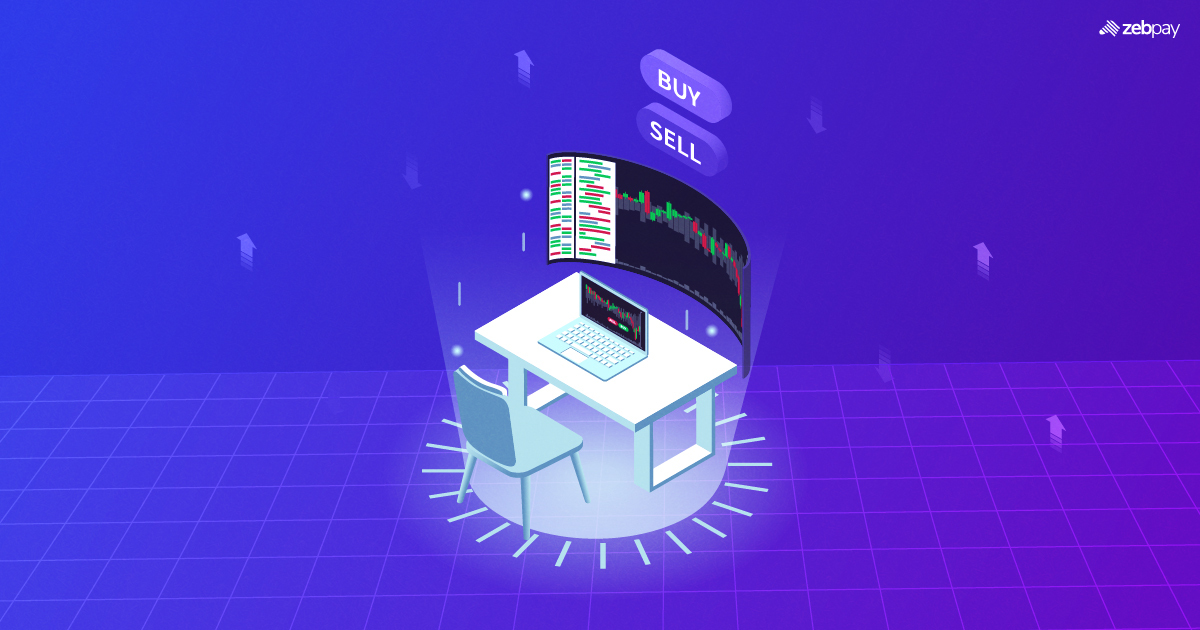The technical analysis serves as a gateway to evaluate the current crypto market volatility and identify potential shifts and breakouts. It involves gaining insights into crypto charts, digital asset data, and trends within the crypto market. In essence, investors aim to buy when the market is at a low and sell when it reaches a peak, emphasizing the crucial role of timing in crypto trading, similar to traditional trading.
Technical analysts leverage various influences, encompassing behavioral and traditional economic principles, to forecast market movements. In contrast to fundamental analysis, technical analysis focuses mostly on price movements. To comprehend these movements through technical analysis, factors such as historical and current crypto demand, global regulatory frameworks, and recent trends in the crypto community must be considered. Technical price trends provide indications of market sentiment, rather than the other way around. This article aims to explain the fundamentals of technical analysis, how to practice it, its advantages, and common pitfalls to avoid.
Learn the Basics of Technical Analysis
Here are several essential technical indicators.
Candlestick Patterns
Candlestick charts are a popular tool among traders, providing valuable insights into the overall behavior of the market. These charts depict the highest and lowest price points in the chosen timeframe, the opening and closing prices, which can range from 1 minute to a month. The body of each candlestick is either green or red, indicating whether prices ended higher or lower than the opening. The thin lines, or wicks, extending from the body offer additional information by showing peaks and troughs, representing the ongoing battle between sellers and buyers and indicating attempts to break out, facilitating a detailed crypto technical analysis.
Read more: How to Trade with Hammer Candlestick Patterns
Trend lines
Crypto technical analysis relies on historical trends, underscoring the significance of comprehending this aspect. It’s crucial to note that past performance does not always predict future outcomes. Trend lines are among the most straightforward crypto indicators, established by drawing a single line connecting various high and low price points. The strength of the trend increases with more connected price points, facilitating the identification and targeting of potential future market trends.
Support and resistance levels
Support and resistance levels serve as potent technical indicators in the crypto market, aiding in the identification of key entry and exit points by representing historical peaks and troughs. These levels play a crucial role in determining whether the market is engaged in range trading or displaying signs of a directional trend. Traders often turn to Fibonacci retracement and expansion levels to pinpoint potential trend targets or recognize potential reversal patterns.
Resistance levels are where prices consistently face pullbacks, while support levels mark where prices have historically bottomed out. A market that consistently surpasses resistance indicates upward momentum, suggesting a potential breakout. Conversely, if prices consistently find support at certain levels, it suggests a downward trend.
How to Practice Technical Analysis?
To practice technical analysis for crypto trading, it’s essential to utilize a reliable and user-friendly charting platform. You must choose the appropriate time frame, and indicators tailored to your trading style, goals, and risk tolerance. Technical analysis can be applied to various analyses, including trend analysis, support and resistance analysis, breakout analysis, and momentum analysis. It serves as a valuable tool for establishing entry and exit points, setting stop-loss and take-profit orders, and determining the risk-reward ratio. Testing and backtesting your trading ideas and strategies with historical data, simulations, or demo accounts is crucial.
Common Mistakes to Avoid in Technical Analysis

Over Reliance on Indicators:
A prevalent error involves pursuing indicators without a consistent strategy or plan, either by blindly following them or constantly switching between them. This approach can lead to over trading and financial losses. Traders often engage in indicator chasing in the hope of finding a quick solution or a foolproof strategy for guaranteed profits, only to face disappointment and frustration. To avoid this mistake, traders should establish clear and realistic trading goals and implement a well-defined trading system.
Ignoring Fundamental Analysis:
One of the common errors in technical analysis is overlooking fundamental analysis. Fundamental analysis assesses elements like the project’s team, partnerships, technological progress, market adoption, and regulatory updates. Ignoring these fundamental factors may lead to a misinterpretation of a crypto’s actual value. Relying solely on technical indicators without taking into account significant news events, such as major partnerships or regulatory shifts, can result in suboptimal trading decisions. To address this mistake, it is essential to incorporate fundamental analysis alongside technical analysis for a well-rounded understanding of the crypto market.
Read more: Understanding Fundamental Analysis In Crypto
Benefits of Mastering Technical Analysis
Provides entry and exit signals: Technical indicators play a crucial role in assisting traders in deciding optimal entry and exit points for trades. Signals derived from indicators like moving averages and the relative strength index (RSI) can indicate situations where an asset is overbought or oversold, suggesting potential reversal points.
Risk Management: Traders can employ technical analysis to establish stop-loss orders, which can restrict potential losses while authorizing profit-taking upon reaching predefined price levels.
Provides Valuable Market Information: Engaging in technical analysis allows you to gather a wealth of information from support and resistance levels, volatility, charts, and candlestick patterns, among other factors. This assists in making informed trading decisions, contributing to the development of a more robust portfolio. Additionally, the insights gained from this information are beneficial for various trading approaches, including intraday, short-term, long-term, and swing trading.
Read more: Beginner’s Guide To Crypto Technical Analysis
Incorporating Technical Analysis into Trading Strategies
Technical analysis encompasses a variety of indicators, each designed to provide insights into specific aspects of market behavior. It’s important to note that a technical indicator, on its own, does not constitute a trading strategy. While indicators can assist traders in recognizing market conditions, a trading strategy serves as a trader’s rulebook, and many traders combine multiple indicators to formulate their strategies.
The choice of indicator for strategy development depends on the trader’s preferred style and risk tolerance. For instance, a trader aiming for long-term moves and substantial profits might opt for a trend-following strategy, employing indicators like moving averages. On the other hand, a trader seeking frequent small gains from small market moves may lean towards a strategy based on volatility. It’s common to use different types of indicators for confirmation.
As traders venture into crypto trading, embracing technical analysis as a guiding principle unlocks a wealth of insights. This approach facilitates the identification of trading opportunities, the optimization of entry and exit points, and the achievement of trading goals.
Read more: Crypto Trading Strategies: A Complete Guide
Conclusion
Technical analysis is vital to evaluating the current volatility and predicting market shifts and breakouts in the crypto space. This involves gaining a comprehensive understanding of crypto charts, digital asset data, and trends within the crypto market. Through proficiency in technical analysis, traders equip themselves to make informed decisions, navigating the unpredictable crypto market with precision and confidence.
Read more: How To Pick A Crypto For Day Trading
While technical analysis is a crucial step toward potential trading success, conducting personal research is equally important before making investment decisions. This involves scrutinizing the crypto and addressing fundamental questions such as, “Who is behind the coin?” or “What is the coin’s purpose?” Answering these critical questions provides assurance, investors rest easy, knowing they have invested in a solid crypto project.
If you found this blog to be useful, do share it with other like-minded crypto enthusiasts. Click on the button below to begin your crypto trading journey using ZebPay.







